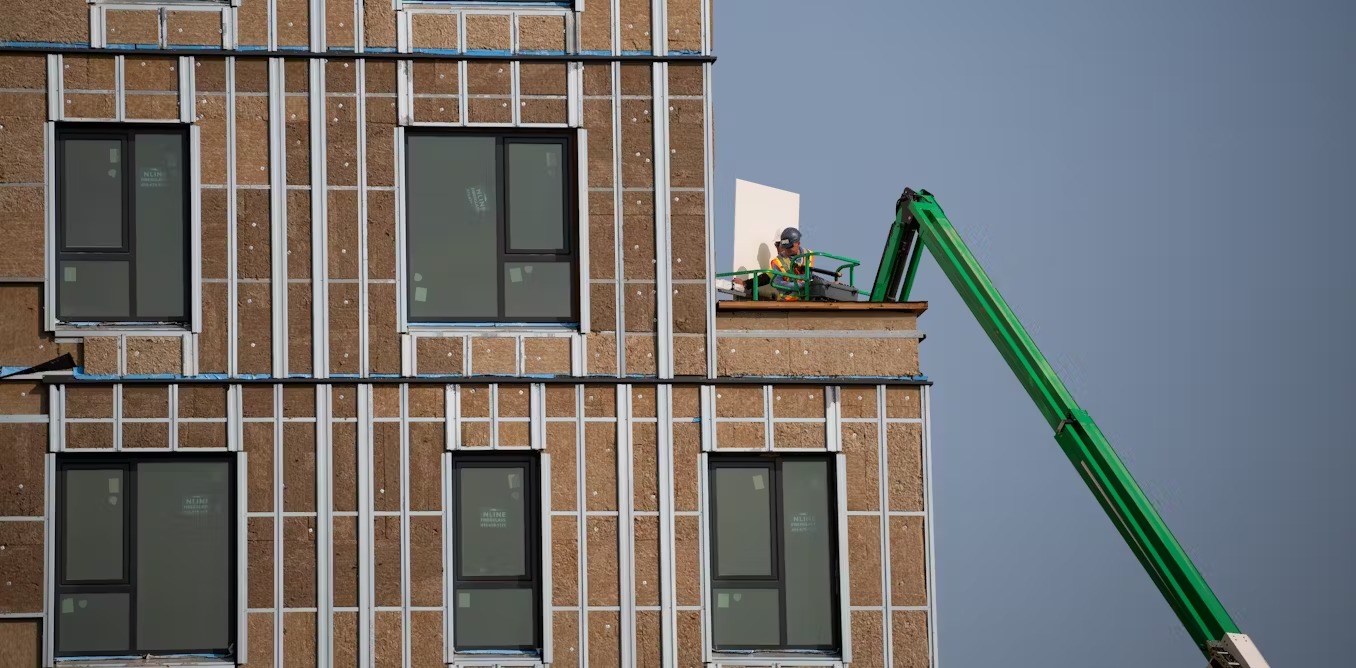Canada’s Housing Plan is pledging an ambitious multilateral approach to build more housing, faster and cheaper, for diverse groups.
It includes noteworthy new funding programs and policies to preserve and expand community housing, including social, non-profit and co-operative housing.
After decades of homeowner-centred policies, the new Tenant Protection Fund and Renters’ Bill of Rights commit more protections for tenants from excessive rent increases, forced evictions and other threats to their tenancies.
But the new housing plan fails to meet the high expectations for a human rights approach to housing, with only limited responses to rent/vacancy control and housing financialization.
It continues to prioritize the supply of market housing and pays short shrift to community housing.
Canada’s ongoing housing crisis extends beyond affordability and supply challenges. It also involves homelessness, risks to tenancy, shortage of accessible units, financialization and the lack of culturally adequate housing.
Community housing is poised to effectively tackle these insidious problems in ways the market cannot.
Huge potential
Our newly released podcast series, Demystifying Community Housing, found a strong consensus among residents, academics, housing and policy practitioners that the community housing sector has huge potential.
Accounting for just under four per cent of total housing stock, this sector faces significant barriers. The persistent neoliberal mindset underpinning Canadian housing policy has resulted in a culture of home ownership and market supremacy. The community housing sector has been siloed and snubbed, and considered secondary to home ownership and for-profit rental markets.
Our podcast highlights Canada-wide conversations on the myths and realities of community housing, its limits and potential — as well as its past, present and future — through social, economic and political lenses.
Prevalent skepticism and misperceptions have impeded public acceptance and political will for serious policy engagement in community housing.
This is partly due to its small size, but also stems from inconsistent uses of the term “community housing” in relation to social housing and affordable housing in policy, statistics and practice.
Let’s dissect some common myths:
Myth 1: All community housing is government-subsidized
Community housing refers to housing that is owned and/or operated by governments, non-profit housing societies or housing co-operatives.
Subsidized housing, or social housing, constitutes an important part of community housing. But not all community housing projects receive government subsidies; many have a mix of social housing, below market-rate rental units and some market rental housing.
Episode 1 of the podcast delves into community housing models with varying governance structures, rent-setting schemes and tenant demographics. An underlying common thread is these models prioritize affordability and stability over profit.
Myth 2: Community housing is only for the most vulnerable
Canada’s community housing to date has prioritized low-income people and those with complex housing needs, such as seniors or those on the verge of homelessness. But a small yet important segment of market-rate units house moderate- to middle-income Canadians who would otherwise be pushed out of the for-profit market.
Community housing cannot and should not serve only the most vulnerable. The podcast reveals how Canada’s social housing system once had a welfare model that served broader income groups. However, this system gradually targeted the most vulnerable due to public divestment.
This is a Solidarity Tower. A Windsor co-op built by the autoworkers union & govt 53 years ago. There was a time the govts of Canada thought affordable housing was important enough to fund. pic.twitter.com/AFHMA2ZODt
— Shawn Micallef 🏳️🌈🏳️⚧️ (@shawnmicallef) April 16, 2023
It has become a common belief that community housing is scarce and should be therefore preserved only for vulnerable populations in the greatest need. This belief normalizes the scarcity of community housing instead of seeing that scarcity as a policy problem.
Canada has one of the smallest community housing sectors among countries in the Organisation for Economic Co-operation and Development. The concentration of low-income and vulnerable households in this sector only reinforces stigmas and stereotypes about it.
The podcast explores different community housing systems and how to reimagine a future with alternative models of community housing, including integrated rental systems. It also explores Black-led housing initiatives and the Indigenization and decolonization of housing solutions.
Myth 3: Community housing in disrepair, dangerous
The physical and social environments of community housing projects are common concerns.
Many believe community housing buildings are in disrepair. Although some aged housing stock has deteriorated and there are higher maintenance costs, that isn’t universal or inherent to community housing.
The 2021 Canadian Housing Survey revealed only 16 per cent of community housing tenants were unsatisfied with their living conditions. The situation is most acute in Manitoba, where only seven per cent of community housing stock is in good or excellent condition, compared to 61 per cent in British Columbia and one-third in Ontario.
There are also concerns about the social environment in community housing arising from ethno-cultural stereotypes about low-income and vulnerable populations.
However, residents and housing operators told the podcast that community housing has provided their diverse communities with affordable homes, a stable life, a social support network and occasional opportunities for asset building.
Although some community housing tenants face challenges engaging in social life, there is a strong desire for social connectedness and peer support.
Myth 4: Community housing is financially unsustainable
The financial viability of community housing projects is often met with skepticism. But one housing expert told the podcast how community housing projects can be financially sustainable through break-even rents that are set at a level to offset project costs over time.
Unlike for-profit developments, community housing projects can also eliminate profit margins to ensure they’re affordable or reinvest profit into the community.
Further affordability can be achieved through public lands, low-interest loans and/or cross-subsidies between units. The economies of scale of an expanded community housing sector could further lower the costs of these projects.
Building a strong community housing sector
Community housing is not a silver bullet to Canada’s housing crisis. But a strong and resilient community housing sector can play a significant role in fulfilling the rights of Canadians to adequate housing.
Despite challenging funding and policy environments, our podcast illuminates community housing success stories and how tenants are supported through innovative practices, multi-sectoral partnerships and the embrace of social entrepreneurialism.
Significant challenges and limitations threaten the continued growth of the sector, necessitating a broad and holistic understanding of what community housing actually is and can do.



 Sharehousing can be fun, but fraught with risk – and the law offers little protection. These 3 changes could help
Sharehousing can be fun, but fraught with risk – and the law offers little protection. These 3 changes could help  영국 대형 투자자들, 미국 부동산 가격 하락 시 매수 준비
영국 대형 투자자들, 미국 부동산 가격 하락 시 매수 준비  Stamp duty is holding us back from moving homes – we’ve worked out how much
Stamp duty is holding us back from moving homes – we’ve worked out how much  Asian Fund Managers Turn More Optimistic on Growth but Curb Equity Return Expectations: BofA Survey
Asian Fund Managers Turn More Optimistic on Growth but Curb Equity Return Expectations: BofA Survey  Australia to Ban Foreign Investors from Buying Existing Homes to Boost Housing Supply
Australia to Ban Foreign Investors from Buying Existing Homes to Boost Housing Supply 



































